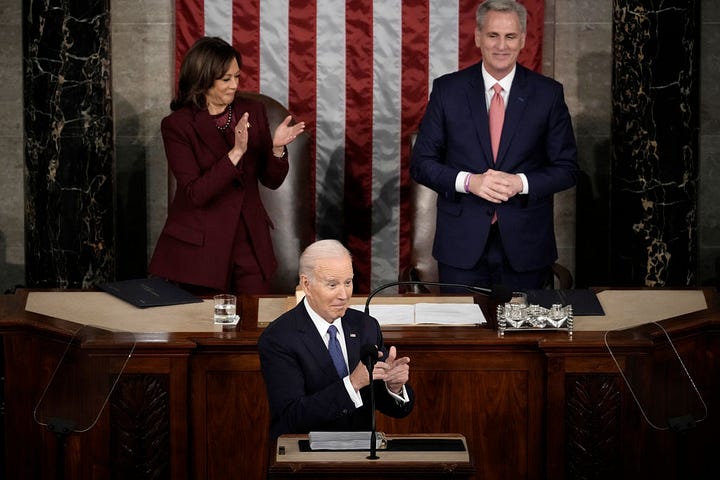

Joe Biden’s State of the Union address last night was effective—for him, for his policies, for his party, and I think for the country.
Here’s why. I’ll start with the usual rules for this special kind of rhetoric, then move to an annotation of the speech as a whole. For the record, I’ve read every State of the Union (SOTU) address that was ever delivered…



